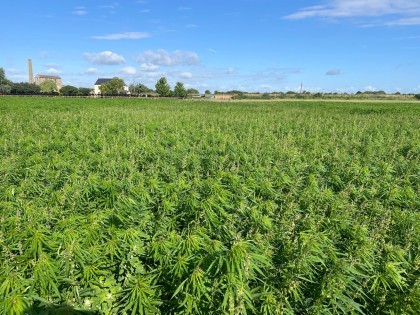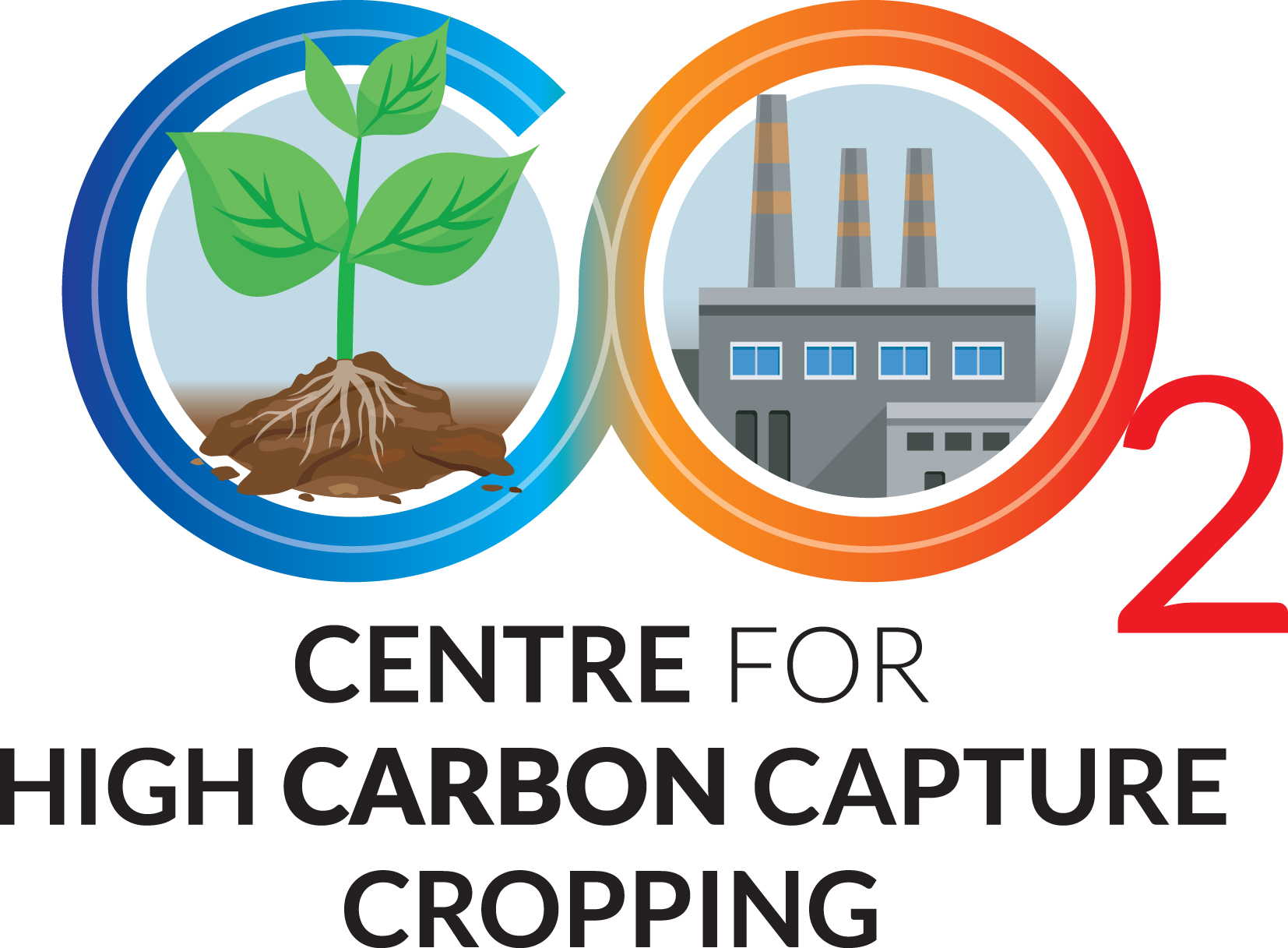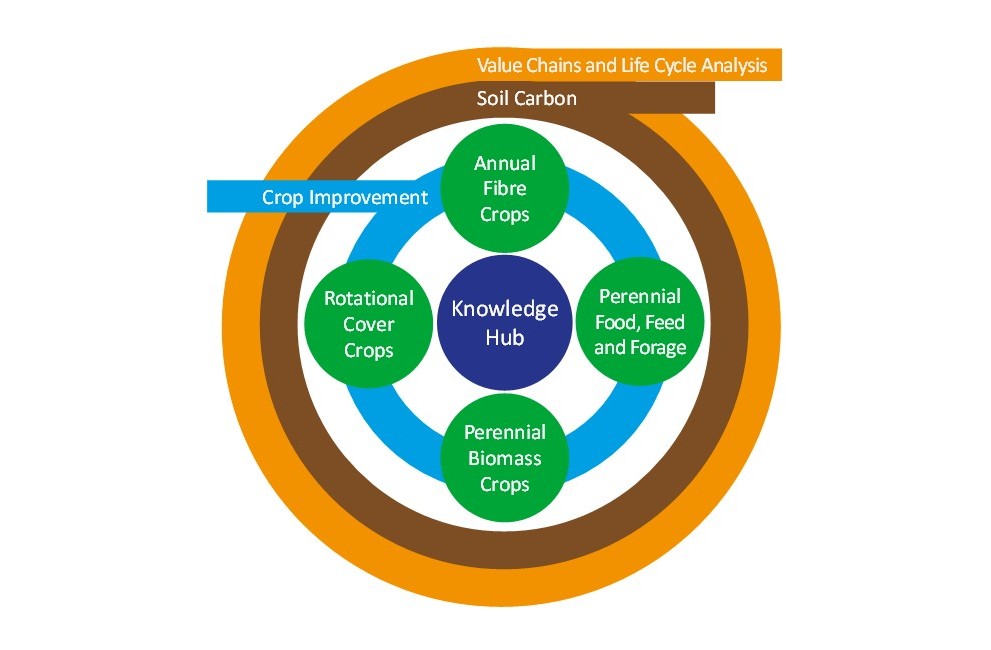
Reducing greenhouse gas (GHG) emissions, and improving resilience to climate change and extreme weather, are global challenges for farming and land management. NIAB's Lydia Smith, Stuart Knight and Jasmine Toole discuss the Centre for High Carbon Capture Cropping - a NIAB-led multi-partner project that began in 2023.
On 20 September 2023, the UK Prime Minister Rishi Sunak recommitted the UK to achieving Net Zero by 2050, saying; “This means that the total greenhouse gas emissions would be equal to the emissions removed from the atmosphere, with the aim of limiting global warming and resultant climate change.”
The goal for UK farming is, however, to reach this milestone ten years earlier. According to the UK Government’s Agri climate report 2022, GHG emissions from UK agriculture in 2020 were 44.8 MtCO2e (metric tonnes CO2 equivalent), or about 11% of the UK’s total GHG emissions.
We can be under no illusion, therefore, as to the extent of progress that is needed over the next two decades to ach

ieve Net Zero. The 2022 Farm Practices Survey indicated that 64% of farmers thought it ‘fairly’ or ‘very important’ to consider GHGs when taking decisions about crops, land and livestock; but the same survey revealed that only 44% believed that reducing GHG emissions would contribute to improving overall profitability.
The Intergovernmental Panel on Climate Change (IPCC) estimates suggest that global soil carbon sequestration in agricultural land has the potential to mitigate GHG emissions of up to 5.3 GtCO2e per year, although it would not be cost effective for farmers to achieve this level.
Uncertainty remains about how much carbon can be captured and retained through changed practices (for example: modified rotations, cover cropping or direct drilling), how long it can be sequestered in the soil, and how we can accurately measure and track the carbon.
Furthermore, there is a limit to how much can be captured in soils before they become saturated, which varies according to soil type. There is no shortage of optimism around the world on the potential offered by soil carbon sequestration.

A recent paper by Professors Jacqueline McGlade (carbon sequestration champion for the UKRI Sustainable order to limit global warming to 1.5°C.
Carbon credits awarded for carbon sequestration form an important part of Australia’s plan to achieve Net Zero by 2050 under the Australian carbon credit units scheme, and similarly under the bipartisan Growing Climate Solutions Act in the US, where the Biden-Harris Administration has committed the USDA to investing $300 million through the ‘Investing in America agenda’ to improve measurement, monitoring, reporting and verification of greenhouse gas emissions and carbon sequestration in climate-smart agriculture and forestry.
Meanwhile, it is reported that FTSE 100 companies are amongst those looking to invest in soil carbon measurement. Whatever the reality, soil carbon sequestration can only form part of the solution, and we also need to look at other ways to capture carbon through cropping. Current UK arable and forage cropping are dominated by relatively few crops, largely grown as monocultures.
This is a risk to sustainable agricultural productivity, with the threat from, or deteriorating ability to deal with, pest, weed and disease pressures.
Alternative, input-efficient cropping options could increase carbon-capture not just in the soil but also locked up in biorenewable materials. This potential for crop diversification helps both farmers and associated industries make progress toward Net Zero. Achieving profitable, sustainable outcomes, whilst minimising the negative and maximising positive impacts that farming has on the environment, requires a concerted effort.
From the outset, this needs to involve the many other industries that form part of food, fibre, and biomass value-chains.
The Centre for High Carbon Capture Cropping (CHCx3) is a four-year, £5.9 million project, led by NIAB, with partners spanning agriculture, industry, and academia. The project, which started in April 2023, aims to:
- help UK growers capture more carbon and build farm resilience through diversifying their cropping
- enable insetting/offsetting of emissions and offer new revenue sources in the carbon market
- support enhanced value chains for industries such as textiles and construction using biorenewables.
CHCx3 was awarded funding by Defra under the Farming Futures R&D Fund: Climate Smart Farming, part of Defra’s Farming Innovation Programme delivered in partnership with Innovate UK. The research (Figure 1) considers the role of four cropping options and their associated tillage systems: rotational cover crops; annual fibre crops (industrial hemp and flax); perennial food, forage, and feed (in particular, enhanced biodiverse leys and perennial cereal); and perennial biomass crops (miscanthus, willow and poplar).
In addition to evaluating their potential to enhance atmospheric carbon capture, and its sequestration in the soil and/or crop-based products, field trials will examine the effects of growing system on economic returns and environmental outcomes.

The project is active in:
- building value chains for optimised production and use of renewable biomaterials for fibre, textiles, construction, or manufacturing, and better understanding their life cycles
- quantifying carbon removals, consistent with emerging standards for measurement, monitoring, reporting, and verification
- developing a platform for tracking soil carbon, to facilitate insetting or offsetting of emissions, enable new revenue opportunities for farms, and support corporate sustainability goals
- evaluating new varieties and traits for UK farmers.
We are developing a molecular breeding platform for industrial hemp and assessing the development needs of other crops within these categories. To aid translation of the research into practice, CHCx3 has established a UK Knowledge Hub that will provide resources to support farmers, agronomists and landowners in the successful uptake and utilisation of crops with high carbon-capture potential, including practical outputs such as crop guides, web tools and apps.
We are also growing a community of growers, agronomists, crop scientists, plant breeders, crop processors, product manufacturers, environment organisations, and policymakers, all with an interest in high carbon capture cropping. There have been opportunities to engage with the research and project partners, and to participate in free events, and these will continue.
This article originally appeared in the Winter 2024 edition of NIAB’s Landmark magazine. Landmark features in-depth technical articles on all aspects of NIAB crop research, comment and advice. You can sign up for free and get Landmark delivered to your door or inbox:
